Dalis Art Often Depicts Imagery From the Subconscious Mind and the Blank State
When Foreign Becomes Familiar, and the Familiar Becomes Strange: Surrealism and the Unconscious
To understand the awesomeness of the fine art motility known as Surrealism, we first need to understand a bit about psychology.

You see, back in the 1920's-1940's, Surrealists became interested in exploring the unconscious homo mind (later the Industrial Revolution, they saw the mind as the only world that remained undiscovered). They were specially interested in psychology, dreams, and the writings of Sigmund Freud and Carl Jung (the pre-eminent thinkers of psychology at the time).
Freud theorized that the human listen was composed of diverse parts — some we are enlightened of (i.e. the conscious mind), but also other parts that we can't direct access (i.eastward. the preconscious and unconscious/hidden heed).
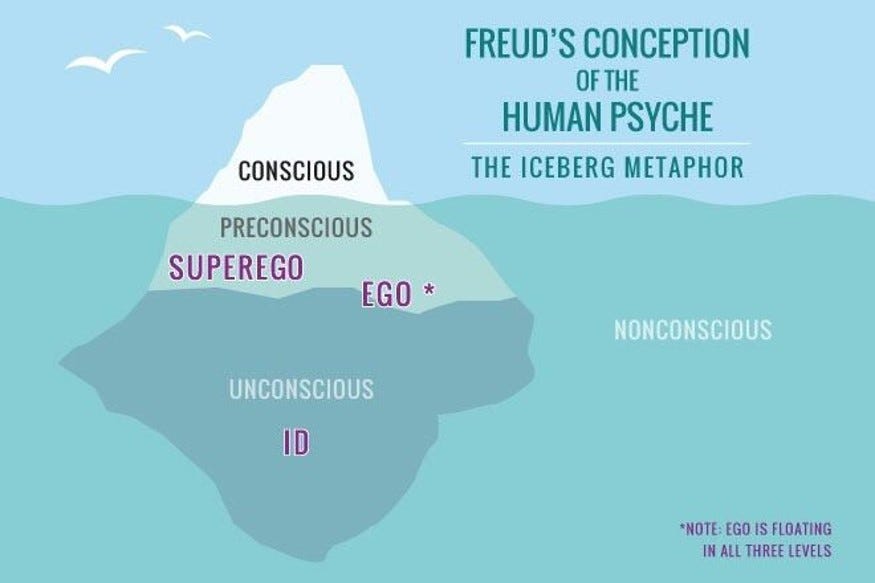
If yous've ever seen the whole devil vs. angel on your shoulder thing, then you've got a gustatory modality of how some of these psychological theories piece of work (my personal favorite is Kronk from Disney's The Emperor's New Groove — classic). To sound really smart though, let's utilize the technical term, Sublimation.

Sublimation
And then with Sublimation, you've got three parts within you working to make decisions:
- Beginning, you've got the id (Kronk'southward shoulder-devil). The id is your more naturalistic self. It wants chocolate — it doesn't intendance if you're on a diet or if chocolate is healthy, your id will always endeavor to satisfy its base of operations desires.
- On the opposite side, you've got the southuper-ego (Kronk's shoulder-angel); your super-ego acts like your patrol officer, reminding you that you're on a diet, and that eating all that chocolate will probably make you feel sick.
- Then of course, there'south the ego (Kronk himself). While you have these two sides of you fighting for dominance — the id and super-ego (shoulder-angel vs. shoulder-devil), ultimately the decision is upwards to you. These ii opposing sides of you are at that place to aid you lot see all the various options; it is the job of your ego to weigh the options and consequences, looking for a mode to find balance: you choose to eat a pocket-sized bar of chocolate. Neither the id or super-ego win (also much chocolate vs. no chocolate), but neither really lose either.
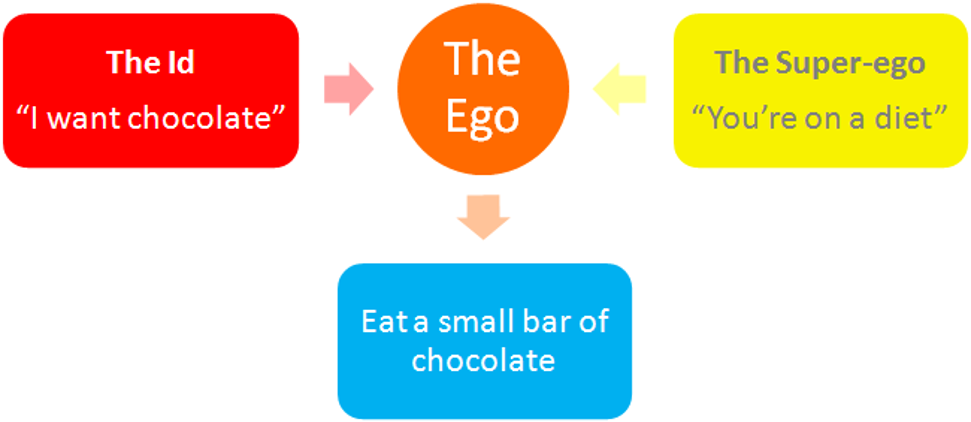
The play a trick on is that all of this is happening below the surface of the iceberg, which is where Surrealists wanted to explore. Surrealist artists wanted to go far affect with these deeper meanings and feelings of the human psyche, using their fine art to costless the unconscious mind — they wanted to liberate their imaginations using complimentary clan, dream analysis, and the unconscious. They enjoyed creating illogical and startling effects that challenged viewers' ideas of what was normal and rational.
But non all Surrealists approached this idea the same way.
Automatism
First, there were artists who used Automatism , a practice that immune them to produce unconscious artwork (similar to costless association or stream of consciousness, such as writing whatsoever comes to mind for ten minutes straight without lifting your pencil or trying to correct anything). For instance, the artist would begin doodling on a piece of paper, allowing their hand to freely scribble wherever and whatever felt natural. When they were done, the creative person would then become dorsum and shut off shapes and fill in with colour, such every bit what we run into in Joan Miró'southward painting, Eat, Love.

André Masson used Automatism in his piece, Battle of the Fishes, dripping gesso (a glue-like substance) across his sail and letting it fall freely and haphazardly. He then threw sand on the sticky gesso, creating random shapes. One time it dried, he doodled effectually these shapes, trying to come across what they may have created.
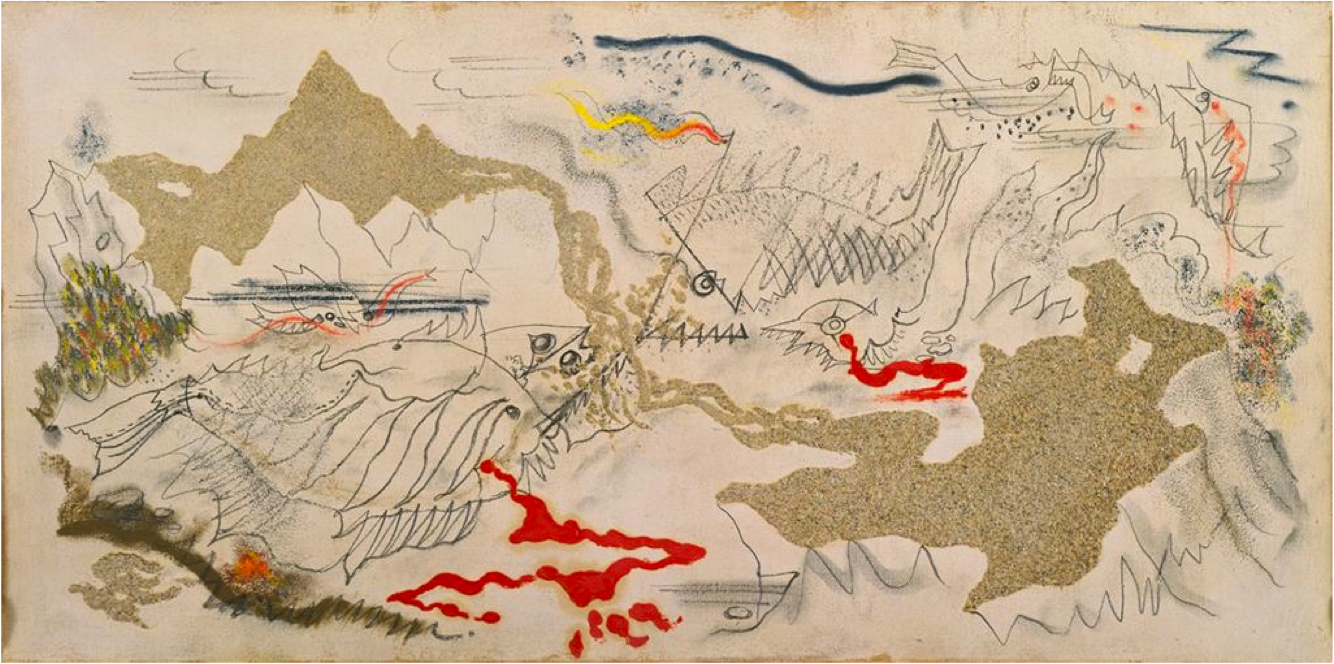
With Automatism, the unconscious heed takes creative control (doodling), then the conscious heed comes in and adds class and order to the piece (filling in with color and meaning).
Paranoiac-Critical Transformational Method
Non all Surrealists used Automatism, however; in addition to sublimation, Freud also emphasized the importance of "dreamwork" — basically, figuring out what the heck that crazy dream you had terminal night meant, and how it reveals something that you desire.
So, permit'southward say that you dream nigh a dog — why a dog? Well, it kind of depends on the person, right? Sometimes it literally is just nearly a dog; mayhap I saw a cute canis familiaris yesterday, and I dreamt almost information technology, because I happen to like cute dogs. Nevertheless, that dog could as well correspond some deeper emotion for you: the loyalty of a friend, a traumatic event, a deep-seeded emotion, etc.
- The Manifest Content is the domestic dog in your dream; in simple terms, your psyche manifested a canis familiaris in your dream.
- Then the Latent Content of your dream would exist the deeper pregnant of the dog — is it loyalty, fear, sadness, happiness? Basically, why are yous dreaming about a dog — what does it mean to yous? What might information technology stand for for yous?
This is where the Paranoiac-Disquisitional Transformational Method of Surrealism comes in (try saying that 10 times fast, sheesh).
I'chiliad a fan of this branch of Surrealism personally, simply I may be a scrap biased: anyone who tin can rock a mustache like Salvador Dalí well-nigh certainly has my vote.

Oh, and did I he had a pet ocelot named Babou?? (he wore a diamond studded collar and went almost everywhere with Dalí)
How much cooler can you get??
"The only difference between me and a madman is that I'yard not mad." ~Salvador Dalí
Anyway… Dalí also wanted to evoke images from his subconscious mind, simply rather than using random movements, he chose to get the road of dreamwork. Sometimes he would wake up in the eye of sleeping, and so paint what he had seen in his dream (some stories say he would agree a spoon in his hand, then that when he fell asleep and dropped it onto the flooring, the sound would wake him upward in the middle of his dream). Other times, it was more of a waking-meditation, wherein he would induce hallucinatory and paranoid states in himself without the utilize of drugs.
"I don't do drugs. I am a drug." ~Salvador Dalí
Dalí would paint the images he saw during his self-induced paranoiac states, deliberating trying to re-construct these dream worlds onto his sail.
We all have practiced this Paranoid Disquisitional Method without really knowing information technology: when y'all stare at clouds in the sky and first seeing animal shapes, for example, or when you dream at night.
Surrealists believed that these artistic depictions would reveal the deeper reality of the unconscious. Their artworks are oftentimes equanimous of real, ordinary objects — merely something e'er feels off, because they are juxtaposed in strange, unfamiliar ways (simply like in a dream).
For case, accept Dalí's Persistence of Memory: a barren landscape covered in a bunch of melting clocks… and possibly a platypus…

Allow's try this dreamwork arroyo:
- Manifest Content : Sure, nosotros can certainly recognize the objects in this painting — existent things like a tree, clock faces, a pocket watch, ants — and yet they are illustrated in very strange ways, making them feel at in one case real and unreal.
- Latent Content: Beneath the surface of these objects lies the symbolism — the clocks seem to exist melting, distorting their faces. Perchance this could correspond how memory becomes distorted over time.
Surrealism in Simple Terms
And so of class other Surrealists, such equally René Magritte, decided to just exist rebellious. Magritte created pieces that appear to be simple, nonetheless once again seem to straddle the line betwixt illusion and reality, asking the states to question the reality of what we actually run across.
"Everything we encounter hides another matter, we e'er want to come across what is hidden past what we see." ~René Magritte
My favorite slice from Magritte would take to exist The Treachery of Images:
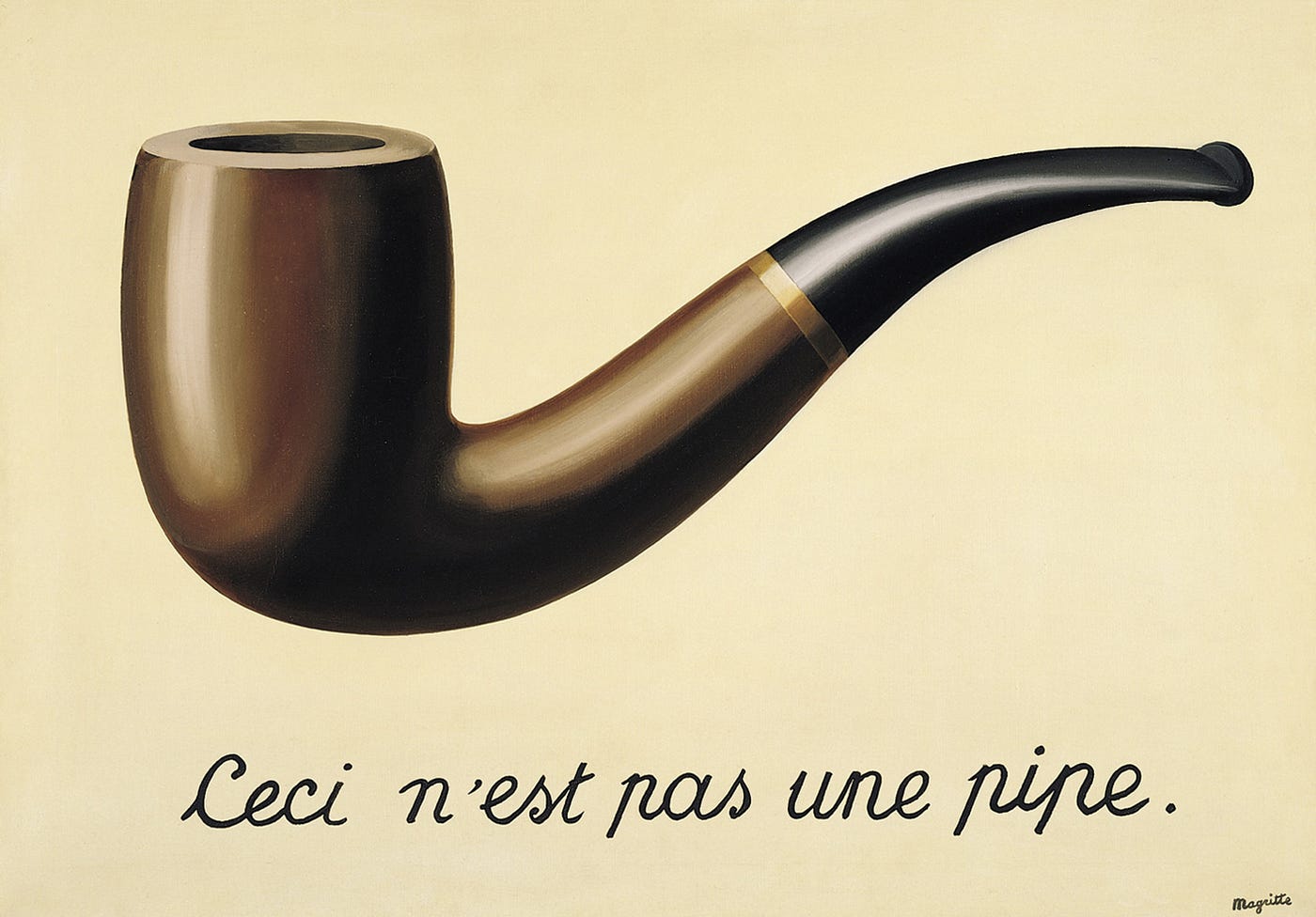
This piece is simple, depicting a realistic-looking pipe — and yet the words painted below explain, "This is not a piping."
But concord on, this totally is a pipe, right? I mean, information technology looks like a pipe to me.
Well, technically yep, and technically, no:
- On one hand, this painting most definitely is a piping —
- And even so on the other hand, this painting is not a pipe: information technology is only a painting of a piping, not the actual pipe itself. Tricky, correct?
So can we trust what we see? Yes — and nonetheless no — only yep, or maybe… peradventure it's all a matter of perspective…
"The listen loves the unknown. It loves images whose significant is unknown, since the meaning of the heed itself is unknown." ~René Magritte
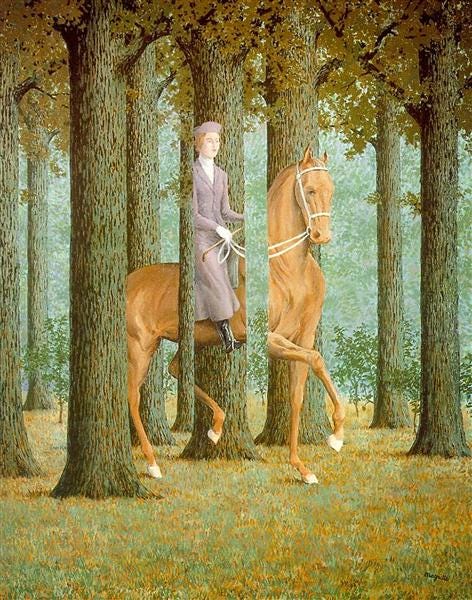
Source: https://medium.com/counterarts/when-strange-becomes-familiar-and-the-familiar-becomes-strange-surrealism-and-the-unconscious-7edbb753da2e
0 Response to "Dalis Art Often Depicts Imagery From the Subconscious Mind and the Blank State"
Post a Comment